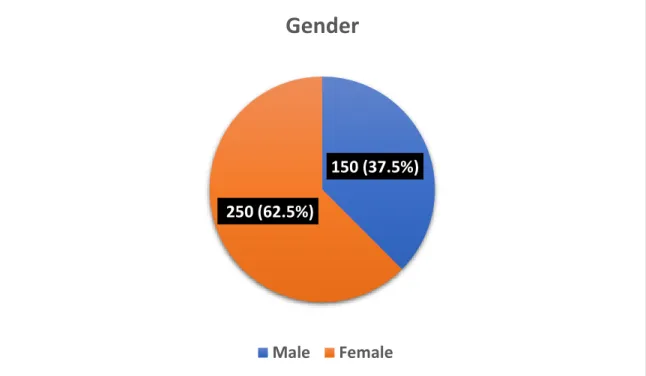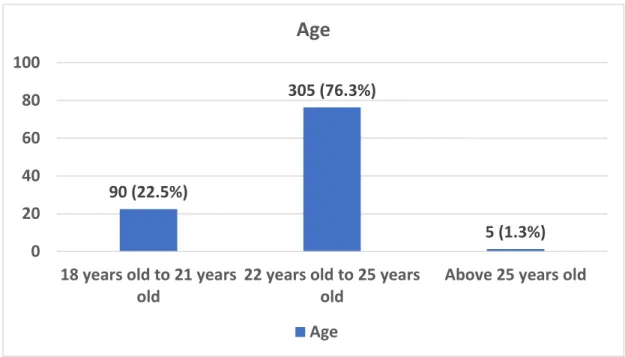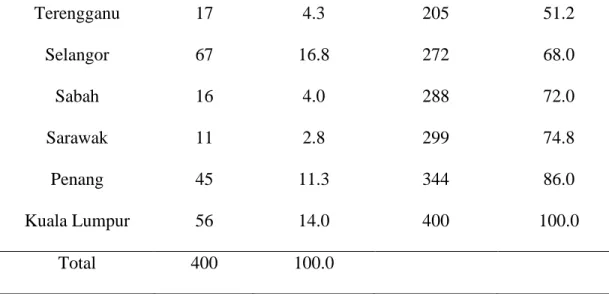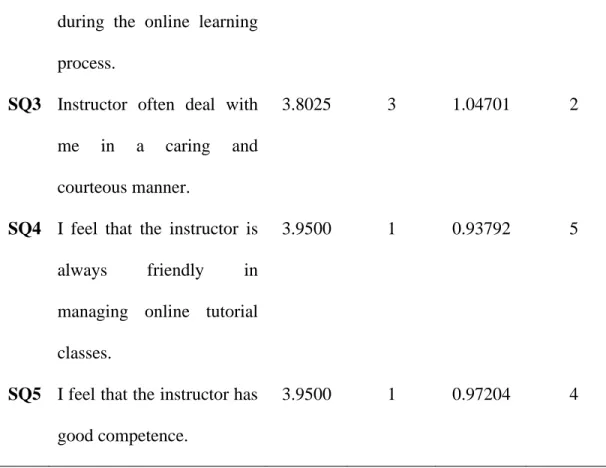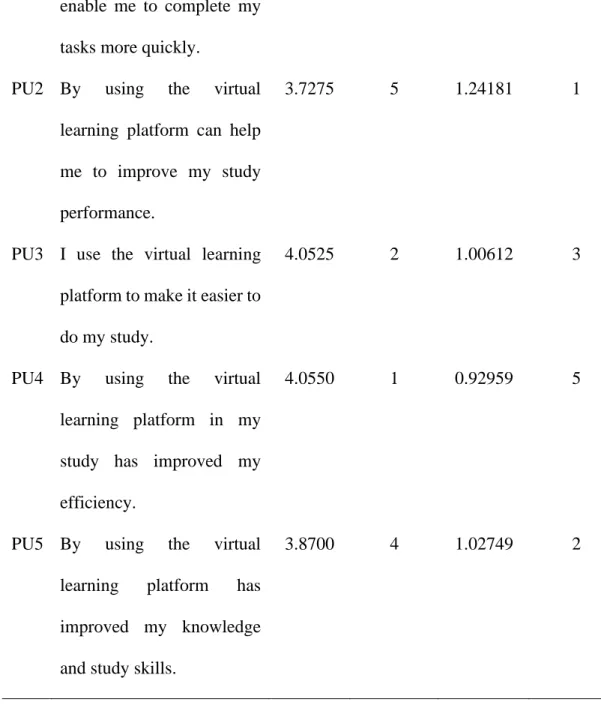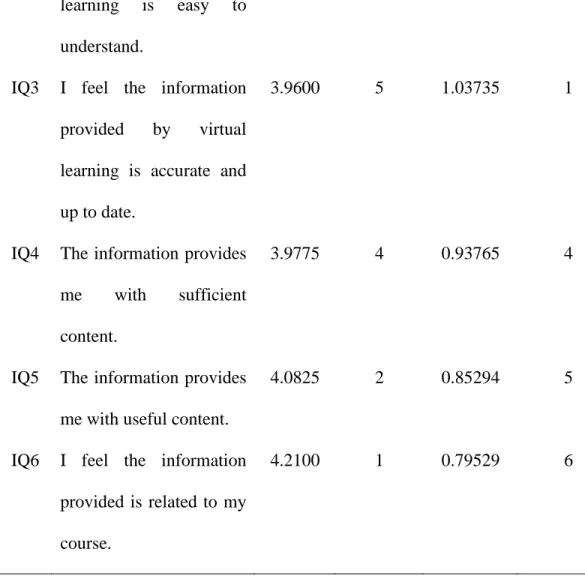In a nutshell, it can be said that four independent variables (service quality, perceived ease of use, perceived usability, and student and instructor interaction) apart from information quality have a significant impact on student satisfaction with virtual learning in the private higher education institutions in Malaysia. This purpose of this study is to investigate the factors influencing students' satisfaction with virtual learning in private higher education institutions in Malaysia during the COVID-19 pandemic.
RESEARCH OVERVIEW
- Introduction
- Research Background
- Industry Background
- Challenge Faced by the Industry
- Student Satisfaction on Virtual Learning
- Problem Statement
- Research Objectives
- General Objective
- Specific objectives
- Research Questions
- Hypotheses of Study
- Significance of Study
- Chapter Layout
Is there a significant relationship between service quality and student satisfaction with virtual learning in private higher education institutions in Malaysia during COVID-19? Is there a significant relationship between information quality and student satisfaction with virtual learning in private higher education institutions in Malaysia during COVID-19?
Introduction
Last but not least, researchers and students conducting research related to the area of student satisfaction with virtual learning will also benefit from this study. At the same time, this study also helps those students who are doing their assignment on the area of student satisfaction with virtual learning who can refer to the finding of this study as a reference.
Literature Review
This chapter will discuss the overview of the research background, problem statement, research objectives, research questions, hypotheses, significance of the study, chapter layout and conclusion.
Research Methodology
Research Results
Conclusion and Discussion
Conclusion
Finally, this chapter discussed the framework and research background including the significance of student satisfaction with virtual learning during COVID-19 in private higher education institutions in Malaysia. In this chapter, we found that independent variables such as student-instructor interaction, perceived ease of use, perceived usefulness, information quality, and service quality will influence student satisfaction in private higher education institutions in Malaysia.
LITERATURE REVIEW
Introduction
Underlying Theory
- Herzberg’s Two-Factor Theory
- Herzberg’s Two-Factor Theory link to Student and Instructor Interaction
- Herzberg’s Two-Factor Theory link to Information Quality
- Herzberg’s Two-Factor Theory link to Service Quality
- Technology Acceptance Model (TAM)
They are considered a component of job content as well as being managed by workers or even students (DeShields et al., 2005). There are some elements of advising staff that include accessibility, reliability, willingness to help, answer to the students' questions as well as understanding (DeShields et al., 2005).
Review variables
- Dependent Variable: Student Satisfaction
The TAM concept is the most widely used for discovering the elements that usually influence the acceptance of the invention (Tahar et al., 2020). Accuracy, currency, completeness, comprehensibility and timeliness are typical indicators of information quality (Dwidienawati et al., 2020).
Proposed Theoretical/Conceptual Framework
- Model 1: Key Factors for Determining Student Satisfaction in Distance Learning
- Model 2: Impact of Technology Quality, Perceived Ease of Use and Perceived
- Model 3: Service Quality, Students’ Satisfaction and Behavioural Intentions in Stem
- Model 4: Student satisfaction process in virtual learning system: Considerations based
Impact of technological quality, perceived ease of use and perceived usefulness in shaping consumer satisfaction in the context of e-learning. This research model studies the impact of technology quality, perceived ease of use and perceived usability on the formation of consumer satisfaction in the context of virtual learning.
Proposed Theoretical Model/Conceptual Framework
This research model examines the factors that influence student satisfaction in the virtual learning system. The coefficient analysis showed that all variables have a positive relationship with student satisfaction.
Hypothesis Development
- The relationship between Service Quality and Student Satisfaction
- The relationship between Perceived Ease of Use and Student Satisfaction
- The relationship between Perceived Usefulness and Student Satisfaction
- The relationship between Information Quality and Student Satisfaction
- The relationship between Student and Instructor Interaction and Student Satisfaction 45
Most researchers have come to the conclusion that the quality of information strongly influences virtual learning and student satisfaction. However, the hypothesis testing result shows a moderate relationship between information design and student satisfaction.
RESEARCH METHODOLOGY
Introduction
Research Design
To evaluate the relationship between dependent and independent variables, a causal research design can be used. Causal research design is also evaluated as the cause-and-effect studies that further investigate the relationship between independent and dependent variables and how they influence each other. Therefore, further causal research of the relationship between independent variables and dependent variables is required and discussed in this research.
Data Collection Method
- Primary Data
Primary data is the information collected for the first time with no alternatives or substitutes. Primary data has yet to be published due to first-hand experience; therefore it is more reliable, original and impartial (Kabir, 2016). Questionnaires, interviews and surveys are among the approaches that can be used to collect primary data.
Sampling Design
- Target Population
- Sampling Frame and Sampling Location
- Sampling Element
- Sampling Technique
- Sampling Size
Therefore, students enrolled in private higher education institutions in Malaysia will be our respondents. These students from private higher education institutions in Malaysia were selected as the target respondents. In addition, researchers will collect questionnaires from students studying at a private higher education institution.
Research Instrument
- Questionnaire Design
- Pilot Studies
Therefore, since the Cronbach's alpha value of the dependent variable (student satisfaction) is 0.892, which falls within the range of 0.8 to <0.9, it has been shown to have very good reliability. In addition, the Cronbach's alpha value of service quality, perceived ease of use, and perceived usefulness is 0.962, respectively. In addition, Cronbach's alpha value of information quality is 0.970 and is considered the highest reliability among all independent variables.
Construct Measurement
- Nominal Scale
- Ordinal Scale
- Interval Scale
- Origin of Measure of Construct
The ordinal scale has nominal properties, but it allows items to be organized according to what kind of idea they have (Sekaran & Bougie, 2019; Zikmund et al., 2013). I use the virtual learning platform in my study to enable me to complete my tasks quickly. I feel the information provided for virtual learning is in a useful format (eg computer-based/web-based/game-based/AR/VR/videos/webinars).
Data Processing
- Data Checking
- Data Editing
- Data Coding
- Data Transcribing
Moreover, data editing refers to the process of reviewing all the questionnaires received from the respondents to identify the errors and correct incomplete ones. In this step, we will transcribe all data collected from the questionnaires into the SPSS software for data analysis. However, we found that all the questions in the questionnaire are completely filled in by the respondents, so we have not edited and changed the data.
Data Analysis
- Descriptive Analysis
- Scale Measurement
- Inferential Analysis
- Pearson Correlation Coefficient Analysis
- Multiple Linear Regression Analysis
An estimator known as Cronbach's alpha with the symbol α will be used to determine the reliability of the dependent and independent variables. Inferential analysis includes Pearson's correlation coefficient analysis along with multiple linear regression analysis and both are used to study the relationship between the dependent variable and the independent variables. H6: All independent variables (service quality, perceived ease of use, perceived usefulness, information quality, and student-instructor interaction) have a significant effect on the dependent variable (student satisfaction).
Conclusion
Determining the associations between a dependent variable along with one or more independent variables refers to a type of analysis known as multiple linear regression analysis (Oguntunde, Lischeid & Dietrich, 2018). Using this method can help determine which independent variable has the largest to smallest contribution to the variation of the dependent variable based on their beta value.
DATA ANALYSIS
Introduction
Descriptive Analysis
- Respondent Demographic Profile
- Private Higher Education Institution Student in Malaysia
- Gender
- Age
- Year of Study
- Current Location of the Private Higher Education Institution
- Central Tendencies Measurement of Constructs
- Student Satisfaction
- Service Quality
- Perceived Ease of Use
- Perceived Usefulness
- Information Quality
- Student and Instructor Interaction
In addition, the mean value of PU3 is 4.0525, which counts as the second and standard deviation. In addition, IQ1 achieved the mean value of 3.9800, which ranks third, while the standard deviation value is 1.02088, which ranks second. In addition, SII3 achieved the mean value of 4.0500, which ranks second, while its standard deviation value is 0.95119, which is considered the second lowest standard deviation value.
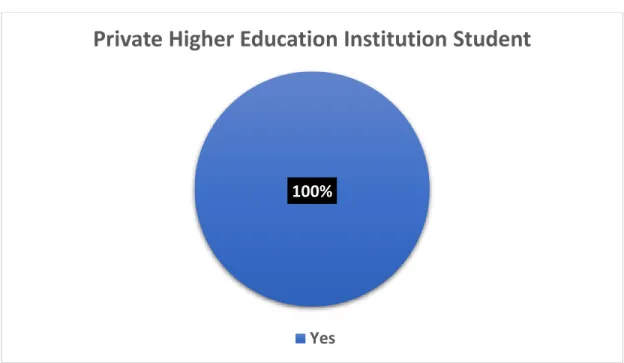
Scale Measurement
- Reliability Analysis
SII5 has obtained the highest average value, which is 4.0550, but the standard deviation value is 0.86825, which is considered to be the lowest standard deviation value. Furthermore, the mean value and standard deviation value of SII1 are 3.9500 and 1.01493 respectively, both of which also rank third. According to Table 4.12, the Cronbach's Alpha value of the dependent variable (student satisfaction) is 0.914, which has the highest Cronbach's Alpha value.
Inferential Analysis
- Pearson Correlation Coefficient
- Service Quality and Student Satisfaction
- Perceived Ease of Use and Student Satisfaction
- Perceived Usefulness and Student Satisfaction
- Information Quality and Student Satisfaction
- Student and Instructor Interaction and Student Satisfaction
- Multiple Linear Regression
According to the table, it appears that the correlation value of 0.662 is between perceived ease of use and student satisfaction. The correlation value between student-teacher interaction and student satisfaction is 0.636, as seen in the table above. As a result, the student-teacher relationship and student satisfaction have a significant relationship.
Conclusion
DISCUSSION, CONCLUSION AND IMPLICATIONS
Introduction
Summary of Statistical Analysis
- Summary of Descriptive Analysis
- Summary of Inferential Analysis
- Reliability Test
- Pearson Correlation Coefficient Analysis
- Multiple Linear Regression Analysis
The value of the alpha coefficient of student satisfaction is 0.914 for the dependent variable, and among the independent variables, perceived usefulness has the highest value of the alpha coefficient with 0.868. Then, the second highest coefficient alpha value is perceived ease of use with 0.834 for the independent variable. Perceived ease of use has an R-value of 0.662, while perceived usefulness has an R-value of 0.700.
Discussion of Major Findings
- Hypothesis 1: Service Quality and Student Satisfaction
- Hypothesis 2: Perceived Ease of Use and Student Satisfaction
- Hypothesis 3: Perceived Usefulness and Student Satisfaction
- Hypothesis 4: Information Quality and Student Satisfaction
- Hypothesis 5: Student and Instructor Interaction and Student Satisfaction
Results proved that service quality of virtual learning has significant effect on student satisfaction. Chandra and Napitupulu (2021) show that the information quality is not significantly affected by student satisfaction. The result conducted indicated that student-instructor interaction has a significant impact on student satisfaction with virtual learning during COVID-19.
Implications of the Study
- Theoretical Implications
- Managerial Implications
This study found that four independent variables (quality of service, perceived ease of use, perceived usefulness in combination with the interaction between student and teacher), in addition to the quality of the information, have a significant impact on student satisfaction with virtual learning . Therefore, the management of these private higher education institutions in Malaysia can focus on these four independent variables to improve their students' satisfaction with virtual learning. To increase student satisfaction with virtual learning, teachers can communicate more (Alqurashi, 2019) and respond to their students in a timely manner (Croxton, 2014).
Limitations of the Study
While conducting this research assignment, we were still adjusting to the emergence of the COVID-19 pandemic, and as a result, we faced some limitations. The main problem was that due to the practice of social distancing, it was difficult to interview or so-called meeting each of the respondents. Some students may have failed to recognize the nature of university study, so we could not confirm that all respondents were our target respondents.
Recommendations for Future Research
Conclusion
How college students in Egypt perceived online learning and satisfaction during the COVID-19 pandemic. Student satisfaction with online learning during the COVID-19 pandemic: A study in public universities in Sri Lanka. Satisfaction with online learning in higher education during the COVID-19 pandemic: A regional comparison between eastern and western Chinese universities.
Basis for good practice: students' experience of online learning in Australian higher education during the COVID-19 pandemic. Retrieved from https://www.teqsa.gov.au/sites/default/files/student-experiment-of-online-learning-in-australian-he-during-covid-19.pdf?v=1606953179.
